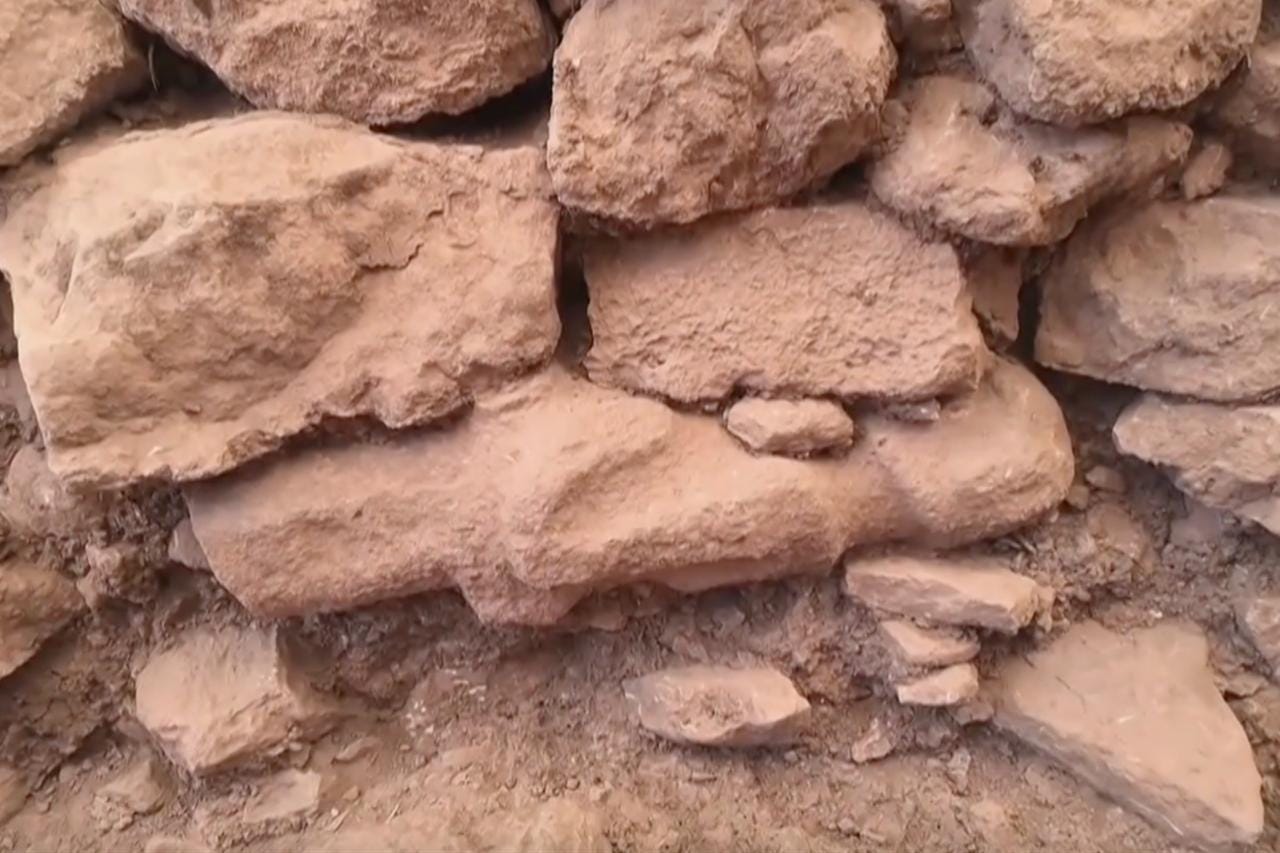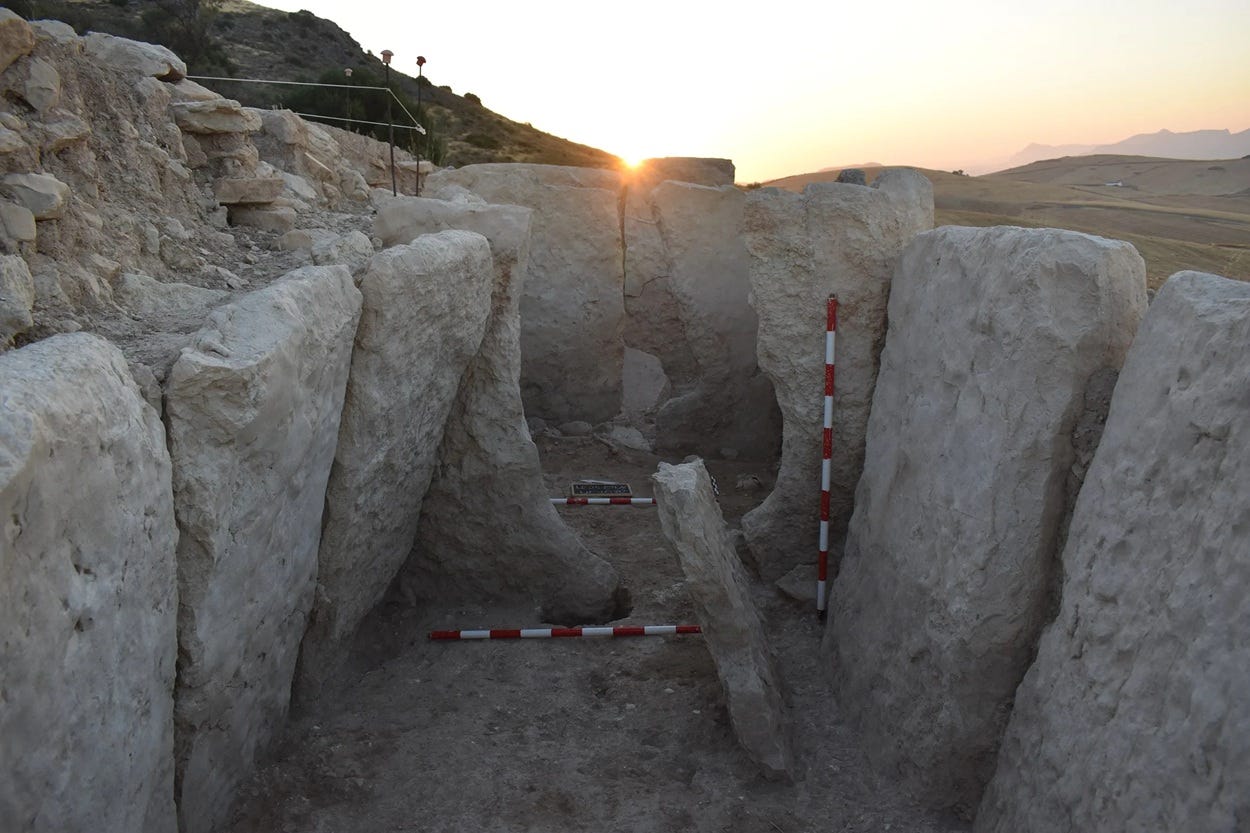🧐 Ancient Beat #168: An unexpected statue at Göbeklitepe, early usage of iron, and a skull that bridges lineages
Hello, good people. I’ve got another round of Ancient Beat, hot off the press.
Shall we?
Here’s the latest ancient news. 👇
🗞 Ancient News: Top 5
A Skull From China Rewrites the Story of Our Genus — A fossil skull, Yunxian 2, found in Hubei Province, China, and digitally reconstructed, has now been dated to ~1 million years ago. And it bridges key lineages. The cranium exhibits traits connecting Homo longi, Denisovans, and later Homo sapiens, implying a shared branch in early human evolution. It carries a mix of primitive and derived traits—less like Homo erectus and more like later Asian hominins—and suggests the human family tree in Asia was more complex than a single linear progression.
Life-Size Human Statue Found at Göbeklitepe — During restoration and excavation between Structures B and D at Göbeklitepe, a life-size human statue was uncovered, embedded horizontally in a wall base. The figure retains an intact head and torso, though its feet are missing. Because human figurative representations are rare at the site, the statue is thought to be a deliberate votive inclusion, possibly symbolic in ritual architecture. Placing it within the wall rather than as a freestanding sculpture suggests a role integrated into building practices rather than mere decoration.
5,000-Year-Old Dolmen Complex Discovered in Teba — In Teba, Spain (in the Málaga region), archaeologists uncovered a monumental dolmen more than 5,000 years old in the La Lentejuela necropolis. The tomb stretches about 13 m (≈ 43 ft) in length and is exceptionally well preserved. Multiple burials and associated grave goods suggest complex rites of interment in the Copper Age, and the scale of the construction points to strong social organization and possibly ritual significance.
How Copper Smelters In The Caucasus Pioneered The Knowledge That Led To Iron — A Late Bronze Age metallurgical site in southern Georgia (ca. 1200 BCE) shows evidence of advanced smelting techniques. Slag analysis revealed that copper workers deliberately added iron-rich minerals like hematite to their furnaces as flux, helping separate impurities. While the goal was better copper, this experimentation foreshadowed methods later crucial for iron production. The remains of furnaces, slags, and tools suggest a community of skilled metalworkers whose innovations bridged the gap between the Bronze and Iron Ages.
Counting Power: What Ancient Tally Sticks Tell Us About the Origins of Money — According to a new study, tally sticks carved from wood, bamboo, and bone show that early accounting systems tracked debts, taxes, and obligations rather than simple barter. Examples from England, China, and the Maya world illustrate how states mobilized resources through these records. Many tally sticks include notches or split designs so two parties could hold matching pieces, preventing fraud. These artifacts highlight how money’s origins lie in political power and administration, not just trade, revealing early governments as the first record-keepers of value.
That’s it for the free Top 5! If you’re a free subscriber, sign up for the paid plan for another 19 discoveries and 2 recommended pieces of content covering The Book of Kells, monumental art, and ancient waiting rooms.
Until next time, thanks for joining me!
-James
Twitter: @jamesofthedrum
P.S. Here’s my Buy Me A Coffee link if you’d like to support my efforts with a donation.
P.P.S. If you want access to the paid version but it’s a little too steep for you right now, just email me — I want this to be accessible.
P.P.P.S. Paid members, read on!
🗞 Ancient News: Deep Dive
Keep reading with a 7-day free trial
Subscribe to Ancient Beat to keep reading this post and get 7 days of free access to the full post archives.



